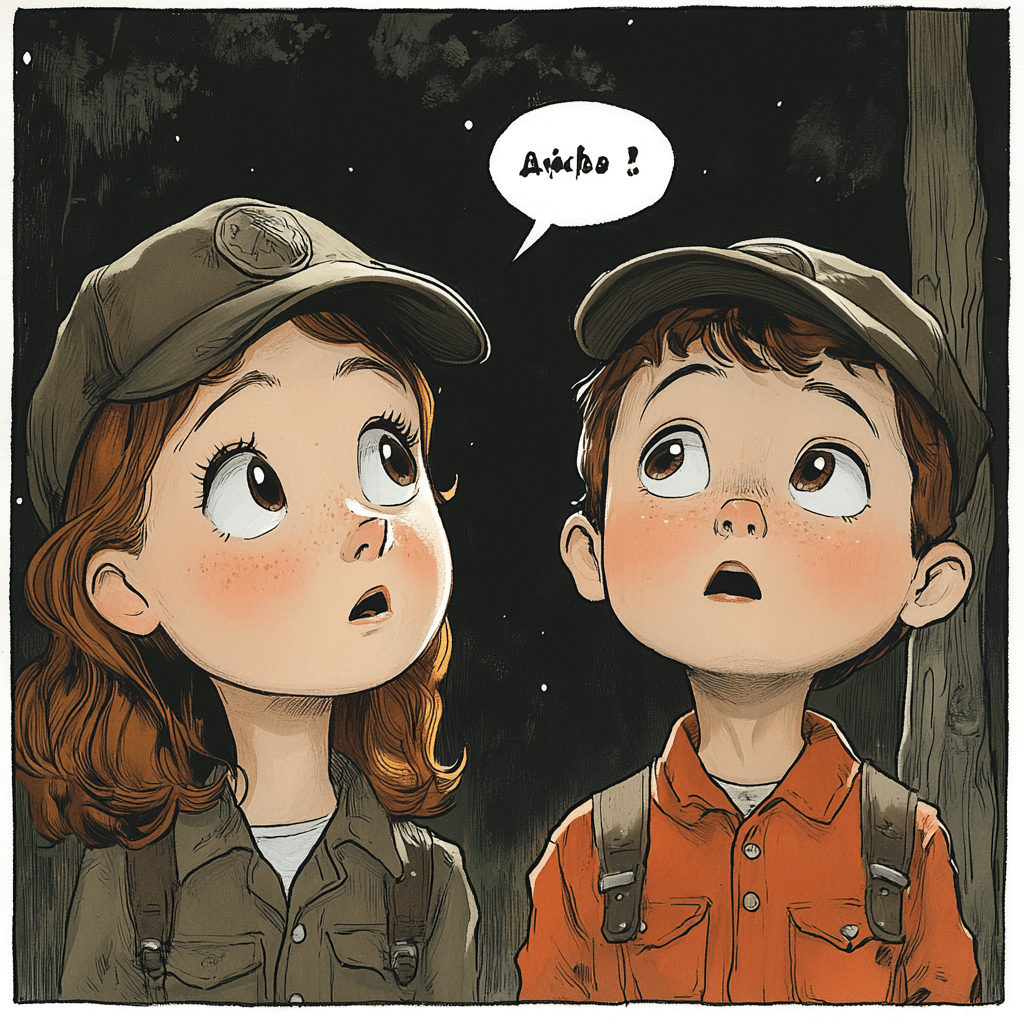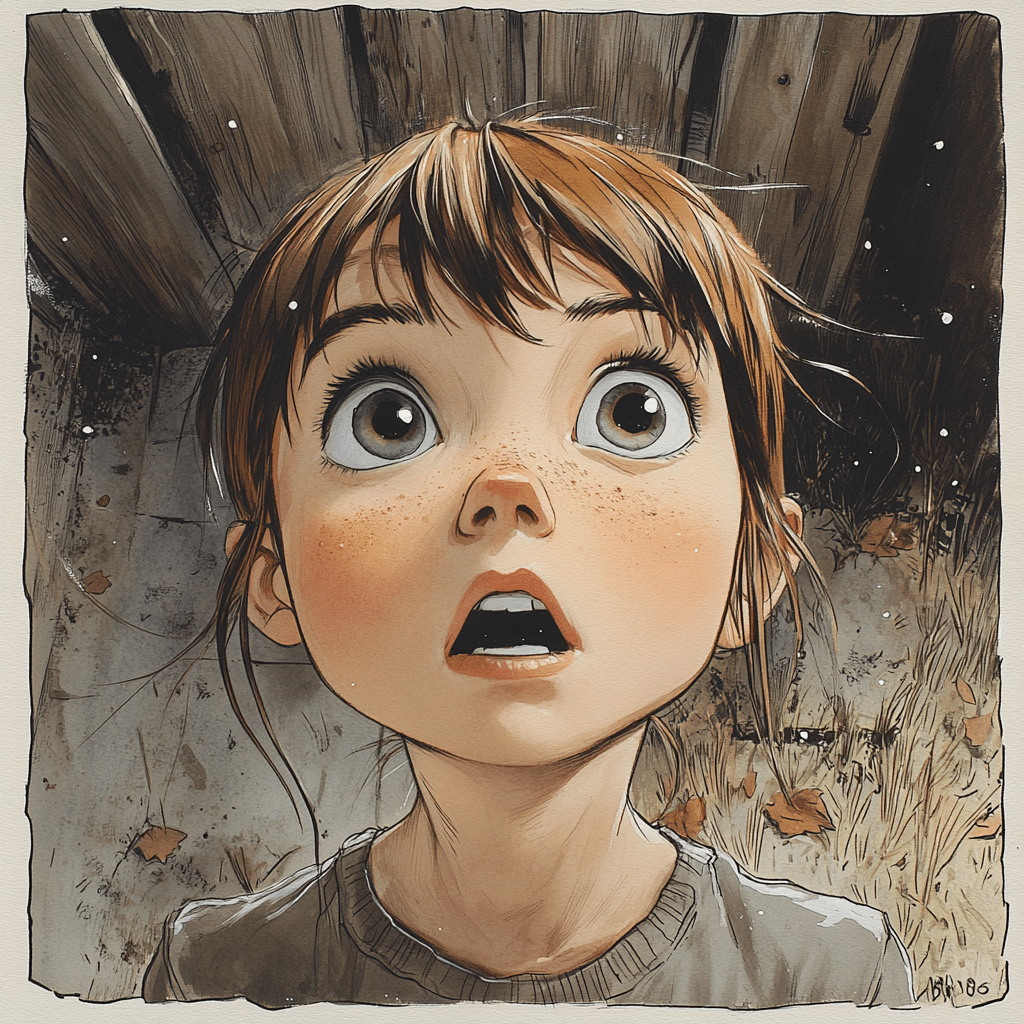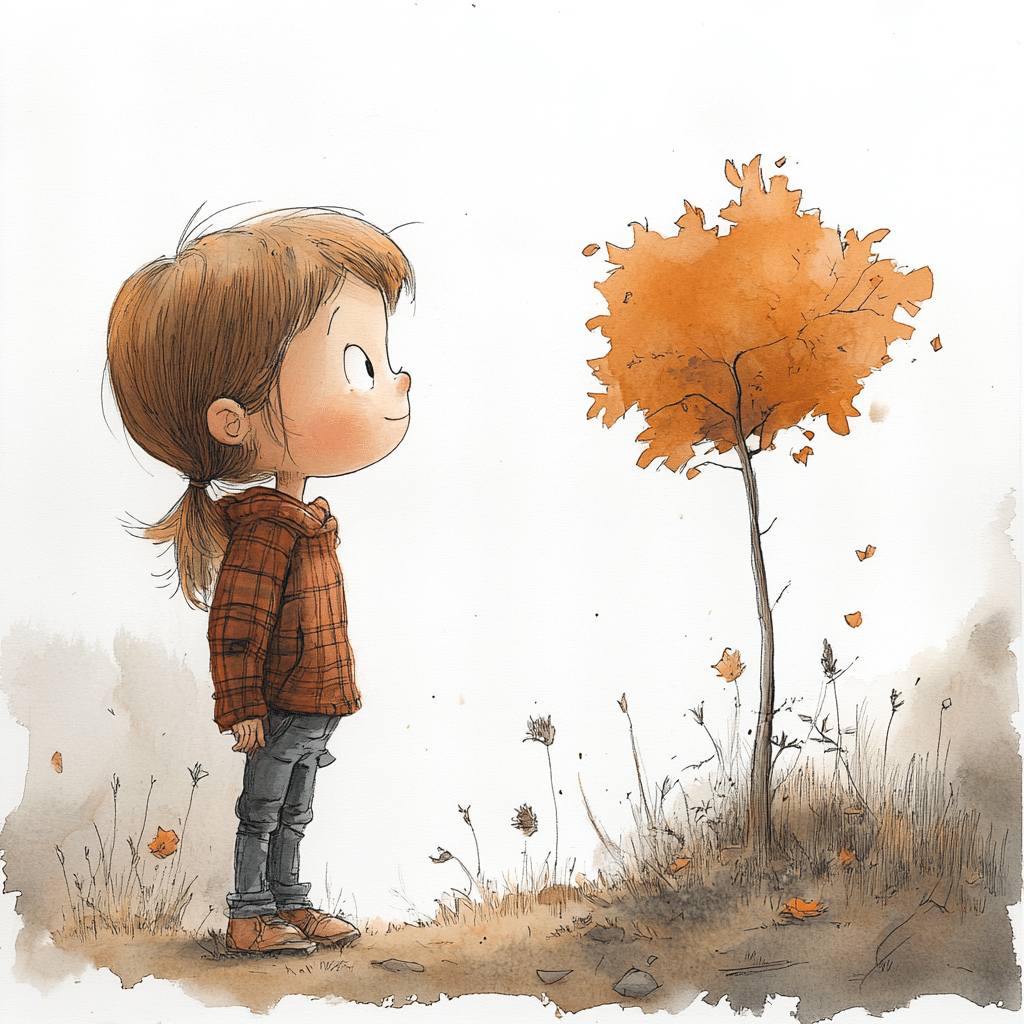How ‘Annie Comic Strips’ Captured the American Heart
‘Annie comic strips,’ created by Harold Gray and first published in 1924, have left an indelible mark on American pop culture. These strips, featuring the adventurous and resilient Little Orphan Annie, managed to capture the essence of a rapidly changing America throughout the 20th century. Annie’s intrinsic optimism, despite her hardships, resonated deeply with readers during the Great Depression, World War II, and beyond.
It’s fascinating how Gray’s creation managed to captivate audiences. Readers were drawn to Annie’s fierce independence, her loyalty to her dog, Sandy, and her knack for finding kindness in the unlikeliest places. The widespread appeal of ‘Annie comic strips’ can also be attributed to Gray’s keen understanding of the American audience and its concerns during turbulent times.
Iconic Moments in ‘Annie Comic Strips’
Little Orphan Annie: Beginning of a Phenomenon
The debut of ‘Annie comic strips’ in the New York Daily News set the stage for what would become a cultural staple. From her first appearance, Annie’s fierce independence and her loyalty to her canine companion, Sandy, made her a beloved figure. Early storylines, featuring her run-ins with the villainous Mrs. Warbucks and her initial meeting with Daddy Warbucks, were a mix of suspense, drama, and a glimmer of hope.
It’s worth noting that many have speculated about the artistic choices in Gray’s work. For instance, some wonder why Little Orphan Annie does not have pupils in her eyes. Some believe it was designed for the reader to interpret the character’s mood, while others think it is simply Gray’s artistic signature. Regardless, these artistic quirks only added to the unique charm of ‘Annie comic strips’.
The Cultural Impact of Annie Comic Strips During the Great Depression
The Great Depression, a time of unparalleled economic hardship, saw ‘Annie comic strips’ rise to unprecedented popularity. Harold Gray crafted storylines that mirrored the struggles of ordinary Americans. Whether it was through Annie’s frequent brushes with poverty or her ability to find kindness and generosity in unlikely places, the strip echoed the resilience and resourcefulness that millions aspired to during those turbulent years.
Gray’s keen commentary on organized labor, the New Deal, and communism attracted adult readers, making the strip not just a children’s delight but also an avenue for political and social commentary. The resilience in Annie’s character became a beacon of hope for many, showing that optimism and grit could weather the toughest storms.
World War II and Beyond: Shaping National Sentiment
The 1940s were a transformative period for ‘Annie comic strips.’ As the United States entered World War II, Annie’s adventures took on a more patriotic tone. Strips from this era often saw Annie thwarting spies and saboteurs, directly reflecting the nation’s wartime anxieties. In post-war America, the strip continued to evolve, addressing emerging societal changes and maintaining its relevance as new generations discovered Annie’s adventures.
The rise of new artists following Gray’s death in 1968 brought different perspectives, yet the core essence of Annie remained unchanged. Classic strips were even rerun for a time, keeping the legacy of Little Orphan Annie alive and well into the new millennium.

| Feature/Aspect | Details |
|---|---|
| Comic Strip Title | Little Orphan Annie |
| Creator | Harold Gray |
| Premiere Date | August 5, 1924 |
| Final Syndication Date | June 13, 2010 |
| Publication Venue | New York Daily News |
| Peak Popularity | 1930s and 1940s |
| Main Character | Annie |
| Signature Elements | – Annie without pupils in her eyes |
| – Annie’s iconic red dress | |
| Reader Demographics | Attracted adult readers |
| Thematic Elements | – Political commentary |
| – Critiques of organized labor, the New Deal, and communism | |
| Post-Creator Transition | Several artists continued the strip post-Harold Gray’s death in 1968 |
| Revival Efforts | Classic strips were rerun for a period |
| Adaptation | Musical titled “Annie” based on the comic strip |
| Legacy | One of the most widely read comic strips of its time, significant cultural and political impact |
Lasting Influence: From Comic Strips to Stage and Screen
Annie’s Journey to Broadway
The 1977 Broadway musical adaptation of ‘Annie comic strips’ marked a significant expansion of Annie’s legacy. With memorable songs like “Tomorrow” and “It’s the Hard-Knock Life,” the musical won seven Tony Awards, including Best Musical. This adaptation highlighted the timeless appeal of Annie’s story, introducing it to a new audience and ensuring the character’s place in theatrical history.
The musical brought a new dimension to the ‘Annie comic strips,’ presenting her story with catchy tunes and vibrant performances. The stage adaptation showcased Annie’s resilience and optimism in a way that resonated with audiences of all ages, ensuring that the character’s message of hope lived on.
Hollywood’s Love Affair with Annie
Hollywood has repeatedly turned to ‘Annie comic strips’ as a source of inspiration. From the 1982 film directed by John Huston to the 2014 modernized adaptation starring Quvenzhané Wallis, each iteration brought something new to the table. These films reflected the evolving nature of the character and her ability to adapt to different contexts while retaining her core essence of hope and perseverance.
The various film adaptations introduced Annie to a broader audience and kept her story relevant. The 2014 version, for instance, updated several elements to fit contemporary society, including more technology and modern societal contexts, yet kept the optimistic core of Annie’s character intact.
Analyzing the Adaptations: What Stayed and What Changed
The various adaptations of ‘Annie comic strips’ highlight distinct aspects of the original material while also making necessary updates to connect with contemporary audiences. The Broadway musical, for example, amplified the emotional undertones of Annie’s journey through its music and choreography. In contrast, the 2014 film adaptation incorporated elements of modern technology and adjusted the storyline to fit a 21st-century backdrop.
Each adaptation, whether on stage or screen, demonstrated the flexibility of Annie’s character to remain relevant and engaging. These changes also show how storytellers can reimagine and reinterpret classics to resonate with new generations, ensuring that the legacy of ‘Annie comic strips’ continues to thrive.
The Legacy of Little Orphan Annie in Modern Media
The Influence on Contemporary Comic Strips and Animation
The storytelling techniques and character archetypes introduced by ‘Annie comic strips’ have influenced countless modern-day comic creators. The idea of a young protagonist facing insurmountable odds with unyielding hope can be seen in contemporary strips and animated series. For instance, the enduring popularity of superheroes like Batman can trace some of its narrative roots back to Annie’s blend of dark realism and hopeful undertones.
These influences are evident even in contemporary animations and comics that explore complex themes and offer inspiring tales of resilience and courage. Annie’s character paved the way for these modern narratives by showing that even the most challenging stories could have a heartwarming and hopeful core.
Annie in the Digital Age
The transition to the digital era has seen ‘Annie comic strips’ being rediscovered by new audiences. Online archives and digital reproductions have made classic strips available to readers worldwide, ensuring that Annie’s message of hope, resilience, and courage continues to inspire.
With platforms like digital archives, classic ‘Annie comic strips’ are only a click away, allowing readers to access decades of adventures and drama. This easy accessibility has introduced Annie to a whole new generation of readers, ensuring her legacy lives on in the digital age.
Celebrating 100 Years of Annie Comic Strips
Approaching its centenary in 2024, ‘Annie comic strips’ stand as a testament to the enduring nature of well-crafted storytelling. Special editions, exhibitions, and retrospectives are expected to honor the strip’s iconic status and Harold Gray’s contribution to the world of comics. As we celebrate this legacy, it’s clear that Little Orphan Annie will remain a symbol of steadfast optimism for years to come.
As we gear up for the centenary celebrations, fans eagerly anticipate the special editions and exhibitions that will showcase Annie’s rich history. These events will not only celebrate the strip’s past but also promise to inspire future generations to carry forward Annie’s message of hope and resilience.

Embracing Annie’s Timeless Message
As we reflect on the legacy of ‘Annie comic strips,’ it becomes evident that the true power of Annie lies in her unwavering spirit. Whether through comic strips, stage productions, or films, her story continues to inspire each new generation facing their unique challenges. In celebrating Annie’s 100-year journey, we are reminded of the timeless power of hope, resilience, and the belief that no matter how hard the journey, “The sun will come out tomorrow.”
The enduring appeal of ‘Annie comic strips’ is rooted in its universal themes and the resilience of its protagonist. Anyone facing a difficult situation can find solace and motivation in Annie’s story, reminding us all that determination and a positive outlook can overcome any hardship.
We’ve embedded the following links throughout the article for additional reading and context:
– The contributions of Annie comic strips during tough times can be likened to how the Baltimore Medical system continues to serve communities in need.
– The resilience and hope depicted in the comic strips can be compared to the defiance shown by those defending their land, much like the crew of an Israeli tank in Egypt.
– Understanding complex themes in the strip can help those who wish to define contingency.
– Check Anne Perry Books in order for a sense of how serialized storytelling can evolve over time.
– The brave spirit of Annie is reminiscent of the unwavering determination of Anwan Glover in his career.
– Like the precise craftsmanship required in Aog Technics, Gray’s work on Annie comic strips was marked by careful attention to detail and depth.
Annie Comic Strips: Little Orphan Annie’s Legacy
A Glimpse into Annie’s World
Ever wondered where Little Orphan Annie first made her appearance? Well, Harold Gray introduced Annie to the world through the Chicago Tribune on August 5, 1924. Known for her resilience and catchy slogan, “Leapin’ lizards!” Annie became a favorite for folks of all ages. She didn’t just capture hearts in the papers; she also leaped into radio, Broadway, and the silver screen.
Quirky Facts You Might Not Know
Here’s a fun tidbit: Did you know that Gray never gave Annie pupils in her eyes? This artistic choice was meant to symbolize her wide-eyed optimism despite the challenges she faced. And oh, speaking of artistic choices, you might find it interesting that in one storyline, Annie and her dog, Sandy, embark on an adventure quite comparable to the wild exploration you could witness in sea life orlando aquarium Photos. The place is bustling, just like the buzzing adventures of our fearless redhead.
Firsts and Fame
Annie wasn’t just another comic strip; she had many first-time moments. She dealt with truly tough social issues, making her tales as gritty as they were endearing. For many readers, she provided a much-needed escape from the struggles of the Great Depression. If you’re pondering on a more exciting expression for “first appearance,” check out these first time synonym alternatives, bringing a fresh twist on how we describe Annie’s debut.

Was Annie based on a comic strip?
Yep, “Annie” is based on a comic strip. The musical comes from Harold Gray’s famous comic strip, “Little Orphan Annie,” which started back in the 1920s.
Why does Little Orphan Annie have no pupils?
Little Orphan Annie doesn’t have pupils in her eyes because it’s part of Harold Gray’s artistic style. Some folks think it’s meant to let readers imagine her mood, while others believe it’s just his signature touch.
Why was Little Orphan Annie so popular?
Little Orphan Annie was super popular because it wasn’t just for kids. Adults loved it too, thanks to its sharp political commentary on stuff like organized labor, the New Deal, and communism.
How old is the comic strip Annie?
The comic strip Annie first appeared on August 5, 1924, so it’s been around for nearly a century.
Was Annie originally black and white?
Yes, Annie was originally in black and white. Comics during the early 20th century typically didn’t have color, so “Little Orphan Annie” was no different.
What was the original Annie based on?
The original comic strip was all about the adventures of a tough, red-haired orphan named Annie and her dog, Sandy. It was a mix of drama, adventure, and social commentary.
What happened to Little Orphan Annie’s real parents?
The story never tells us exactly what happened to Annie’s real parents. They disappeared, and she was left as an orphan, which sets up all her adventures.
What was Annie’s dog’s name?
Annie’s dog is named Sandy. The loyal pooch is her constant companion and has been through a lot with her.
Who is the tallest orphan in Annie?
The tallest orphan in “Annie” is usually depicted as Pepper. She’s got a tough attitude and often stands a bit taller than the others.
Is Anne of Green Gables the same as Little Orphan Annie?
Nope, Anne of Green Gables and Little Orphan Annie are different stories. Anne of Green Gables is a novel about an orphan girl in Canada, while Little Orphan Annie is a comic strip and musical about an orphan in New York.
Is Little Orphan Annie based on a true story?
Little Orphan Annie isn’t based on a true story. It’s all fiction, created by Harold Gray for his comic strip.
Was Little Orphan Annie a redhead?
Yes, Little Orphan Annie is a redhead. Her bright red hair and red dresses are part of her iconic look.
What is orphan Annie’s last name?
Little Orphan Annie’s last name is Warbucks. Taken in by Daddy Warbucks, she becomes known as Annie Warbucks.
How old is July in Annie?
In the musical “Annie,” July is around 13 years old. She’s one of the older orphans in the orphanage.
Why did the cartoonist choose to make Annie an orphan?
Harold Gray thought making Annie an orphan would create more dramatic and interesting stories. It gave her a lot of freedom for adventures.
Who was Annie inspired by?
Annie was inspired by a poem called “Little Orphant Annie” by James Whitcomb Riley and seemed to carry some of that poem’s spirit.
Is Orphan Annie based on a true story?
Like I mentioned before, “Little Orphan Annie” isn’t based on a true story. It’s a fictional comic strip.
Is A Place for Annie Based on a true story?
“A Place for Annie” isn’t based on the same Annie from “Little Orphan Annie.” It’s a different story entirely.
What is Annie 2014 based on?
The 2014 movie “Annie” is based on the original “Annie” musical, which, in turn, was based on the “Little Orphan Annie” comic strip. It’s a modern take on the story.



